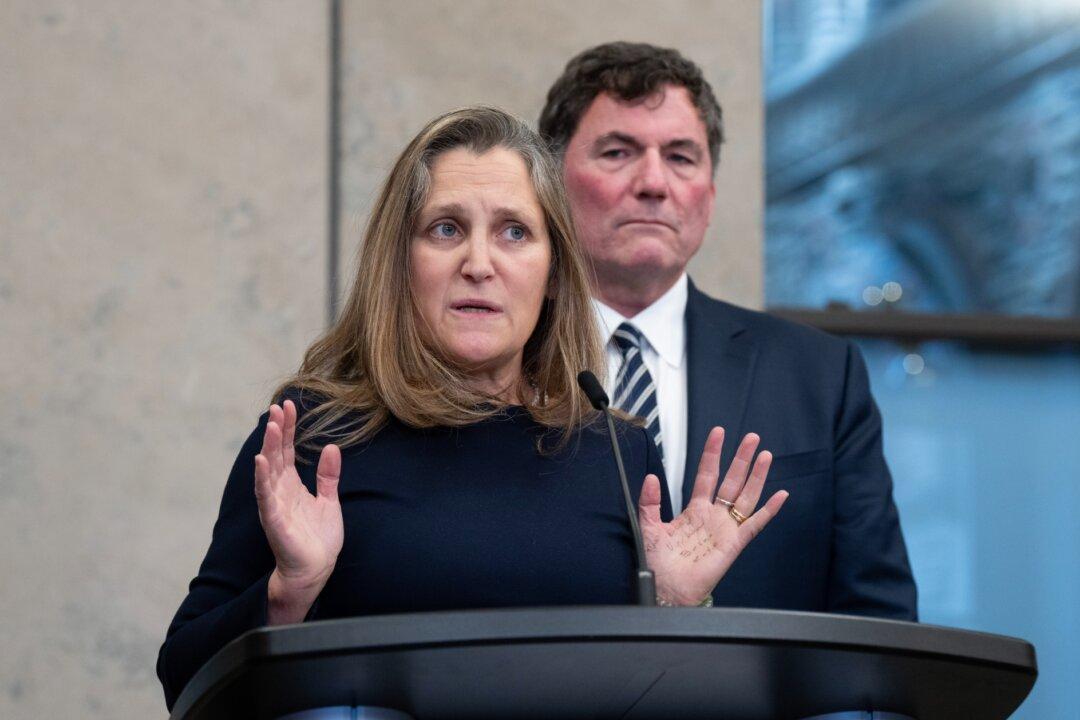The closing of the unofficial border crossing Roxham Road last year stemmed the flow of asylum-seekers into Quebec from New York state, but overall numbers are rising in Canada with a spike in those arriving by air. The rise has many reasons behind it and can’t be accounted for by the growing scope of global conflict alone, immigration experts told The Epoch Times.
A major contributor is likely an increase in travel visa approvals.
The government has recently ramped up its visa processing to eliminate a backlog from the pandemic, Montreal immigration lawyer Stéphanie Valois told The Epoch Times. After arriving on travel visas, many people proceed to claim asylum.
Fewer travel visa applicants have been asked to prove they will return home in recent years, said lawyer and York University international relations professor Michael Barutciski in an email. This is also likely contributing to an increase in air arrivals, he said.
Nearly 28,000 claimants arrived via air in the first half of this year, compared with roughly 8,000 by land. This is a reversal of a long-standing trend of land arrivals being far more common, even before Roxham Road became a heavily used route.


From Land to Air
Roxham Road is an unofficial border crossing between New York and Quebec used by more than 100,000 migrants since 2017. Its use waned after Canada and the United States closed a loophole in their bilateral Safe Third Country agreement in March 2023.The agreement says anyone seeking asylum must file their claim at the first of the two countries they enter. But the loophole was that this requirement applied only to official border crossings. Now it applies anywhere along the border: Asylum-seekers will be turned back to the United States to make their claims there.
“This responds to an increase in asylum claims made by Mexican citizens that are refused, withdrawn or abandoned,” said the federal government’s announcement at the time. “It is an important step to preserve mobility for hundreds of thousands of Mexican citizens, while also ensuring the sound management of our immigration and asylum systems.”
“When people apply for a visa, it’s almost impossible to know what their intentions are when they arrive in Canada,” immigration lawyer Valois said. They may be planning to seek asylum, or sometimes the situation changes in their homeland—if a war starts, for example—and they decide to make a claim, she said.
The same is true of international students who file asylum claims, she added. Federal Immigration Minister Marc Miller has expressed alarm regarding international student claims.
The number of international students claiming asylum at Seneca College increased from about 300 in 2022 to nearly 700 in 2023. Claims from Conestoga College students rose from 106 to 450 during that same period.
These increases are “alarming” and “totally unacceptable,” Miller said in February.
As the method of entering Canada to claim asylum has changed, so have the most common countries of origin and the destinations within Canada.

Countries of Origin, Destination
The highest number of claimants so far this year have arrived from India. IRB data on country of origin is only available for January through March. It shows approximately 6,000 claimants from India. The next greatest are those from Mexico (about 5,800), Nigeria (5,061), and Bangladesh (3,016).Given that the data is limited to only three months, it’s hard to tell how the annual total will compare to 2023. But if the number of Mexican applicants remains steady, Canada may see numbers similar to last year.
However, the number of Haitians and Colombians—which were among the highest in 2022 and 2023—appears to be on the decline. These are also groups that would have come in large numbers through Roxham Road.
Canada’s spike is not following global trends, he said, which suggests it may have to do with a perception that Canada’s asylum policies are especially lenient. In other words, Canada is attracting claimants who feel they may not successfully seek asylum elsewhere.
Asylum-seekers are specifically people who arrive in the country without pre-approved refugee status. For example, although Canada has taken in many Ukrainian refugees, Ukraine is not a top source of asylum-seekers.
The majority of claimants so far this year have arrived in Ontario, whereas for years, Quebec was at the centre of the asylum issue.
Quebec has received more claimants than Ontario almost every year since 2016. The only exceptions were 2020 and 2021, but Ontario’s numbers were only slightly higher during those years (a difference of approximately 700 people in 2020 and roughly 1,600 in 2021).
In the first half of this year, Ontario received approximately 48,000 claimants and Quebec received 33,000. British Columbia and Alberta were the next highest recipients, with roughly 5,200 and 4,500 respectively.
How to distribute claimants, along with the federal funds for helping settle them, has been a hot topic.
Quebec received a pledge of $750 million in federal funds in June, and B.C. Premier David Eby was most outspoken about other provinces wanting help as well. Minister Miller replied in June that British Columbia needs to take on more asylum-seekers if it wants more money.
The average cost for each claimant is $16,500 in 2024, the PBO said.








